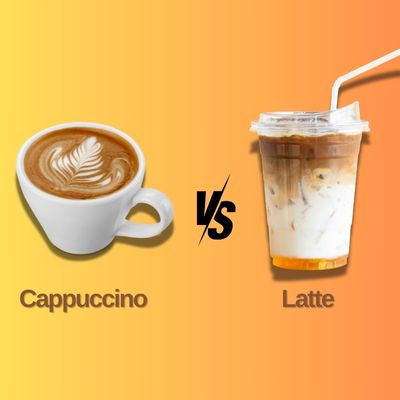In today’s digital world, restaurants constantly seek new ways to connect with customers and stand out. That’s where proximity marketing comes in.
Proximity marketing is like a virtual tap on the shoulder, reaching out to nearby people and offering them enticing deals or messages on their smartphones.
For restaurants, this means the ability to send special offers or menu updates to potential diners as they pass by, increasing the chances of turning them into loyal customers.
Studies show that restaurants using proximity marketing see a significant increase in foot traffic and customer engagement. Supplementary data shows that 59% of consumers reached through proximity marketing are more engaged at the shopping location.
So, if you’re wondering how to use proximity marketing for restaurants, you’re in the right place!
Let’s explore how this innovative strategy can help your restaurant succeed in today’s tech-focused market.
Understanding Proximity Marketing
Proximity-based marketing, also known as proximity marketing for hotels and restaurants, is all about reaching out to customers who are adjoining to attract them to your business.
This innovative approach uses technologies like Bluetooth Beacons, near-field Communication (NFC), and geofencing to send messages or offers directly to people’s smartphones near your restaurant or hotel.
Bluetooth beacon technology is a small device that sends signals to nearby smartphones, triggering notifications or messages. NFC works similarly, but users must tap their phones on NFC tags to receive information.
Geofencing creates virtual boundaries around specific areas, allowing businesses to send targeted messages when customers enter or leave those zones.
These technologies enable restaurants and hotels to attract potential customers in real-time, offering them personalized deals or information suitable when they’re most likely to be interested.
Benefits of Proximity Marketing for Restaurants

Proximity-based marketing, particularly marketing for food and beverage (F&B) establishments like restaurants, offers numerous advantages that can significantly impact business growth and customer satisfaction.
- Increased Foot Traffic: Proximity marketing helps draw potential customers near your restaurant, inviting them with timely offers or promotions. By reaching out to people nearby, you can increase the likelihood of them choosing your restaurant for their dining experience.
- Improved Customer Experience: With proximity marketing, you can provide customers with a more personalized and convenient experience. When sending targeted messages or offers based on their location, you can make them feel valued and catered to, adding to their overall dining experience.
- Targeted Promotions: Proximity-based marketing allows you to deliver highly targeted promotions or deals to specific groups of customers. Whether offering discounts to customers who have visited your restaurant before or enticing passersby with a special deal, you can tailor your marketing messages to maximize their effectiveness.
- Improved Customer Loyalty: By consistently engaging with customers through proximity marketing, you can build stronger relationships and foster loyalty. By offering exclusive promotions or rewards to repeat customers, you can encourage them to return to your restaurant repeatedly.
- Data Insights and Analytics: Another one of the benefits of proximity marketing for restaurants is that it provides valuable data insights and analytics that can help owners make informed decisions. When tracking customer interactions and behaviors, such as which offers are most effective or peak visiting hours, restaurant marketing strategies can be adjusted to meet customer needs and preferences better
7 Proximity Marketing Strategies for Restaurants
Let us learn about practical strategies for restaurants to use proximity marketing to attract more diners and boost business.
1. Location-Based Offers and Promotions
One effective strategy for proximity-using marketing in restaurants is to offer location-based promotions tailored to customers’ surroundings. When using location data, restaurants can deliver targeted offers and promotions directly to customers’ smartphones near the establishment.
For example, restaurants can use proximity marketing to promote happy hour discounts to customers passing by in the late afternoon or early evening.
These targeted promotions can attract potential diners to stop in and take advantage of the special deals while they’re in the area.
Similarly, restaurants can offer special deals or discounts to customers near their location during off-peak hours, helping drive traffic during slower times of the day.
For instance, a restaurant could send a notification to nearby customers offering a discount on lunch specials during the mid-afternoon slump.
2. Personalized Recommendations
Another powerful strategy for restaurants to utilize proximity marketing is to offer personalized recommendations to customers.
By leveraging data collected through proximity-based marketing channels, restaurants can tailor menu suggestions and recommendations based on customers’ preferences and past orders.
For instance, if a customer has previously ordered a particular type of cuisine or specific dish, the restaurant can use proximity marketing to send personalized recommendations for similar items when they are near the establishment.
Restaurants can also use proximity marketing to offer recommendations based on the time of day or current weather conditions. For example, a restaurant might recommend refreshing salads or cold beverages on a hot summer day to customers nearby.
Similarly, during the evening, the restaurant could offer hearty entrees or comfort foods to customers in the area.
3. Interactive Menus and Digital Signage

Restaurants can improve the dining experience by integrating proximity-based technologies into their menus and digital signage, offering interactive experiences for diners.
One innovative approach is using interactive menu displays and digital kiosks, which allow customers to explore menu options dynamically and engagingly. These displays can feature vibrant images, detailed descriptions, and video content to showcase menu items and entice diners.
For example, a restaurant could install digital menu boards throughout the establishment, allowing customers to browse the menu and place orders directly from their table using a touchscreen interface.
Additionally, restaurants can implement digital kiosks near the entrance or in high-traffic areas, where customers can view menu options, customize their orders, and even make reservations.
Another interactive option is tableside ordering systems, where customers can use their smartphones to scan QR codes or connect to Bluetooth beacon technology to access digital menus and place orders from their tables.
This approach augments the dining experience by reducing wait times. It provides opportunities for upselling and cross-selling additional menu items, which is an integral part of restaurant and hotel marketing plans nowadays.
4. Seamless Ordering and Payment
Proximity marketing for hotels, restaurants, and other food service channels offers an excellent opportunity to simplify the ordering and payment process, enhancing customers’ overall dining experience.
One effective strategy is the implementation of mobile ordering apps that utilize beacon technology to enable customers to browse menus, place orders, and make payments directly from their smartphones.
When leveraging beacon technology, these apps can detect when customers are nearby and prompt them to access the menu and place orders, reducing wait times and improving efficiency.
Additionally, restaurants can offer contactless payment options, allowing customers to pay for their meals seamlessly using their smartphones or mobile wallets.
This provides added convenience for customers, minimizes physical contact, and augments safety, particularly concerning current health concerns.
5. Feedback and Surveys
Incorporating feedback and surveys into proximity marketing strategies can give restaurants valuable insights into customer satisfaction and preferences.
One effective method is to use proximity-based technologies to prompt customers to provide feedback or complete surveys directly from their smartphones while they’re still on the premises.
For example, restaurants can send push notifications to customers’ devices, inviting them to participate in a brief survey about their dining experience.
When gathering feedback in real-time, restaurants can promptly address any customer issues or concerns, ultimately improving the overall dining experience.
Additionally, proximity marketing allows for more targeted and personalized feedback requests, as restaurants can tailor survey questions based on factors such as the customer’s location within the establishment or their past dining history.
The benefits of proximity marketing and its integration into feedback and surveys are manifold. Not only does it provide restaurants with valuable insights into customer satisfaction and preferences, but it also demonstrates a commitment to continuous improvement and customer-centricity.
6. Data Collection and Analysis

Data collection and analysis are essential components of proximity-based marketing strategies for restaurants. They enable businesses to measure performance, track customer behavior, and make informed decisions.
When collecting data from proximity marketing campaigns, restaurants can gain valuable insights into how customers interact with their establishment and tailor their marketing efforts accordingly.
Understanding customer behavior, such as foot traffic patterns, peak visiting times, and popular menu items, is a critical aspect of data collection. This information can help restaurants optimize operations, adjust staffing levels, and offer promotions or specials during high demand.
Analytics software, customer relationship management (CRM) systems, and proximity marketing platforms are tools and platforms for collecting and analyzing data from proximity-based marketing campaigns.
These tools allow restaurants to track key metrics such as engagement rates, conversion rates, and return on investment (ROI), providing valuable insights into the effectiveness of their marketing efforts.
7. Omnichannel Marketing Integration
Integrating proximity-based marketing with other marketing channels, such as social media, email marketing, and loyalty programs, can enhance the effectiveness of restaurant marketing efforts.
One approach is to use proximity marketing to complement existing social media strategies. This involves sending targeted messages or promotions to customers who are nearby and encouraging them to engage with the restaurant’s social media profiles.
For example, restaurants can send notifications inviting customers to share photos of their dining experience on social media in exchange for a particular discount or promotion.
Similarly, proximity marketing can be integrated with email marketing campaigns by capturing customer data and preferences collected through proximity-based interactions.
Restaurants can use this information to personalize email communications, such as sending personalized offers or updates based on the customer’s past orders or dining preferences.
Additionally, integrating proximity marketing with loyalty programs allows restaurants to reward loyal customers with exclusive offers or incentives based on their proximity to the establishment.
For example, restaurants can use proximity-based technologies to check in customers automatically and award loyalty points or rewards for each visit.
Conclusion
In conclusion, understanding how to use proximity marketing for restaurants opens up exciting opportunities to attract more diners, boost customer experiences, and drive business growth.
When utilizing proximity-based technologies such as Bluetooth beacons, NFC, and geofencing, restaurants can deliver customers targeted offers, personalized recommendations, and seamless ordering experiences.
The benefits of proximity marketing, including increased foot traffic, improved customer engagement, and data-driven decision-making, underscore its importance in today’s restaurant industry.
Moving forward, integrating proximity marketing with other marketing channels and continuously collecting and analyzing data will be vital to maximizing the effectiveness of restaurant marketing efforts.
With the right strategies in place, proximity marketing can revolutionize how restaurants connect with customers and thrive in the digital age.








